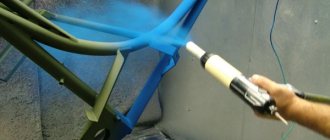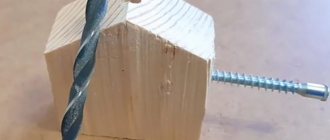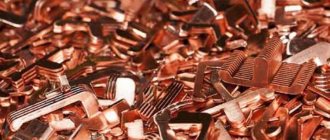Juicers are necessary for every summer resident and gardener. These devices are especially useful when it comes to pressing fruits at the end of the summer season. The design of such a device is quite simple, so it is not at all necessary to purchase it in a store. A homemade juicer will help you process a large volume of fruits and berries quickly and easily.
To make such a device, we will need materials and tools, as well as a couple of hours of our precious time. Let's learn more about how to make a juicer with your own hands. Let's look at the main types of homemade units.
Juice Washing Machine
An unused washing machine with a working centrifuge can be used to make a centrifugal model. A juicer from a washing machine will cope with tasks such as grinding raw materials, squeezing and filtering liquid.
To make your task easier, the first step is to draw detailed drawings. The drawing will allow you to draw up a preliminary plan for the future device and prepare the necessary tools.
Design of a homemade juicer from a washing machine: 1 - washing machine tank; 2 - centrifuge; 3 — mesh liner; 4 - fruit hopper; 5 - grater; 6 — bushing-axle; 7 — guide pipe; 8 — engine; 9 - car tire.
To complete the planned project, you should prepare a centrifuge, a non-deformed casing, holders for fasteners, and bearings of various sizes.
The work is carried out in accordance with the algorithm:
- First of all, it is important to clean all parts from rust and scale resulting from constant exposure to the powder. Using sandpaper, polish all cleaned surfaces to a shine.
- The resulting design provides for the presence of only two holes. The first is for loading ingredients, the second is for finished juice. All others should be covered with rubber inserts.
- The next step is to prepare the grater and gasket. It is preferable to cut the gasket using a stainless steel grinder. This will increase the reliability and service life of the unit. You can make a grater by following a few basic steps. Drill holes of small diameter and divide the resulting circles into sectors. Secure the prepared element with screws and fill the cutting teeth.
- The drum must be retrofitted with stiffeners and a filtration mesh.
- A polyethylene pipe can be used as a loading container. Secure it with metal corners. It should be screwed with some shift to the side so that its edge is aligned with the exit from the grater.
- A food pusher can be easily prepared from any wooden cutting.
- To prevent the device from falling below the grater level, install a limiter.
- The more powerful motor you use, the higher the performance of the device will be.
All parts must be well secured, and electrical parts must be insulated.
Before starting for the first time, clean all parts with detergent. Be sure to pre-start. This will allow you to identify unnecessary noises and tapping noises that indicate an error in the design.
Load the fruits into the pipe, place the container, and press them with the pusher. Juicing should be done until you feel vibration. When vibration occurs, stop filling with new products and allow the appliance to spin. Upon completion of the procedure, immediately disassemble the device into parts and wash them thoroughly.
In addition to our recommendations, you can seek help from video clips that clearly and in detail describe all stages of construction.
How to make it yourself
Creating a homemade device begins with disassembling the automatic machine, from which it is necessary to remove the tank, stainless drum, which must be descaled using a solution of vinegar or citric acid, an electric motor and a pulley with a belt for transmitting torque. For the stability of the structure, you can leave counterweights.
Attention!!! For the normal functioning of the homemade product, you need an engine that produces at least 1500 rpm. Therefore, in some cases, you will have to replace the original motor of the automatic washing machine with a more powerful engine. Then we work according to the following scheme:
Then we work according to the following scheme:
- We weld or assemble a frame from profile corners and a steel pipe, the height of which should be sufficient to freely place a container under it for the squeezed juice, and the width should be sufficient to accommodate the body of the juicer and the electric motor.
- We cut off the bottom of the pan, which needs to be placed on a wooden base in order to turn it into a fine grater using a small drill and a sharp punch.
- We screw three curved corners to the homemade chopper, with the help of which we fix this part in the center of the drum so that there is a gap between these parts for the passage of fruit cake.
- We seal all the extra holes in the tank using steel plates (can be made from a donor pan), rubber gaskets and rivets. Then we drill a hole in the bottom of the tank and fix a tube in it for the squeezed juice. Install the pulley under the belt.
- We assemble the tank with the drum and install the resulting structure on the frame.
- We attach the electric motor to the frame. We connect the engine and the pulley to the drum using a belt with mandatory adjustment of the tension force.
- We connect the installation to the power source. To do this, you need to cut off the wires going from the engine to the speed sensor. The remaining wiring is divided into pairs in such a way as to connect each other along the wire from the brush and the stator, and connect a two-core cable with a plug for a standard socket to the remaining two wires. All connections must be securely insulated.
- We make a bell for fruit from a plastic pipe, the diameter of which is equal to the diameter of the chopper. Three curved squares are attached to the walls of the pipe using rivets so that the guide device does not reach the modernized bottom of the pan by approximately 5 millimeters.
It is not prohibited to make changes to the design if they benefit the homemade product.
Device assembly is complete. Let's move on to testing. We install a guide device into the drum into which apples, pears, etc. are poured. Place a container for juice under the tube from the tank and turn on the motor. The operating principle of the device is as follows:
- the grater grinds the fruit into puree, which, under the influence of centrifugal forces, settles on the walls of the drum;
- the squeezed juice flows into the tank, from which it is drained through a tube into a substitute container.
Advice!!! The squeezed juice will become cleaner if you first apply a damp sheet to the inner surface of the drum, which, after several revolutions of the motor, will stick to the walls and will not allow large pulp to pass through.
At the end of the process, this sheet is removed from the drum in one movement along with the spent fruit cake. Advanced craftsmen can replace the sheet with a fine-mesh mesh, which, when modifying the design of the juicer, can be installed in the drum as additional protection.
Other types of units
You can make other types of juicers yourself.
Press juicers are good friends of winemakers. A screw press is best suited for pressing grapes. Depending on the grape variety, different principles of berry processing are applied. White grapes are pressed only after crushing. The red is pressed only after the fermentation process has begun.
The press operates according to the following algorithm. First, the grapes are placed in a basket, then a screw mechanism presses juice out of it, which can be used to make wine, a variety of drinks, and jelly. You can prepare a grape press with your own hands from wood, plastic or stainless steel. The easiest way to implement it is from wood. Made from stainless steel, the device will be of higher quality and more durable.
The production of a press juicer is shown in the video.
From a meat grinder you can make an auger-type juicer with a medium capacity. Rotate the handle and get juice. This mechanism is optimal for processing small volumes. The main advantages are affordability, reliable design and the possibility of long-term operation.
Types of designs: diagrams and drawings
The main thing in the press is a solid base and working mechanism.
Operating principle of the device:
- prepared raw materials for pressing (chopped apples) are placed in fabric bags layer by layer through drainage grids;
- With the help of a mechanism, pressure is lowered from above and presses the juice.
A good press squeezes out 65-70% of the juice, leaving an almost dry pulp. It’s quite possible to make one with your own hands.
Homemade press designs differ in the operating principle of the main mechanism:
- Screw.
- Based on the jack: mechanical and hydraulic.
- Combined.
In the bulk of structures, pressure is exerted from above, but in the combined version, compression occurs in two directions: using a screw mechanism at the top and a hydraulic jack at the bottom.
The juice press consists of the following parts:
- stable bed;
- a quadrangular or cylindrical body, inside of which bags of chopped apples are folded;
- wooden lattices with which the bags are placed so that they do not spread out;
- piston-pressure, directly exerting pressure on the cake;
- jack support;
- working mechanism: screw with handle, mechanical or hydraulic jack;
- bowl-tray
The main body can be:
single perforated: juice will flow through the holes along the walls and through the bottom into the tray;
Screw apple press with single perforated body
- double: a solid casing with a slightly larger diameter is placed on a perforated metal cylinder;
- in the form of a solid metal body with one drain hole at the bottom;
- assembled from wooden slats connected with hoops - a barrel. The walls serve as a drainage grid.
Screw press for apples with a body made of wooden slats There may be no body at all - just a pyramid of wooden lattice frames in a tray with a mouth at the bottom, under which a container for juice is placed.
Hydraulic Frame Press
This design is easy and quick to install. For the bottom plate, you can take a piece of countertop, for example.
Principle of operation
Based on their design features, there are two types of juicers:
- centrifugal;
- screw
The principle of operation of the former is that centrifugal force at high speeds separates the juice from the pulp. At the same time, the engine and drum heat up, which contributes to the oxidation of the juice, the loss of vitamins and beneficial microelements during extraction.
Auger juicers operate at low speeds, which facilitates squeezing juice in a “gentle” mode without heating while preserving all the beneficial ingredients of the resulting mass.
Both methods are used both on an industrial scale and in everyday life. When purchasing a juicer, the consumer often does not think about the method for separating juice from vegetables and fruits. Hand-made production allows you to carefully study the specifics of spinning and the constructive method of operation of the equipment.
Juicer - meat grinder - drawings
The juicer is unprepossessing in appearance and simple in design, but after working with it once, you will no longer be able to bring yourself to use your industrial combine with an electric drive and numerous attachments: after it, you will again have to wash the entire kitchen and clean all the attachments.
In a homemade juicer, there are only three parts to wash, and the seeds and pulp do not get stuck, and the productivity is such that, even if done manually, you get a bucket of tomato juice in 30-40 minutes.
Juicer device
Externally, the juicer resembles a meat grinder: the clamp is also attached to the table, the same bell of the loading window, the same handle. However, this is where the similarity ends, since the principle of operation is completely different: there is no auger or conventional knives inside, although there is its own grate at the outlet. Instead of a screw there is a small drum with scraper knives. With their blades they grab the tomato (or slices, if large) and drag it along with them when you turn the handle, pushing it into the narrowing gap between the body and the drum.
Rice. 1. Juicer-meat grinder and its main parts: 1 - body assembly, 2 - drum, 3 - juice tray, 4 - scraper knives, 5 - handle with shaft.
The mechanism is extremely simple. The parts visible from the outside are a clamp, two plate bracket posts above it, a hopper with a handle and a mesh window for juice and a pulp exit window, with two trays below them. Inside there is one single unit - a drum, and in it there are plates of retractable scraper knives with a spacer spring. The drum, with its thickened bottom with a threaded hole, is screwed onto the shaft shank, which is connected to the drive handle. The shaft bearing and at the same time the oil seal is a fluoroplastic bushing, the body of which is a steel bushing welded to the side of the hopper.
Rice. 2. Main parts of the juicer: 1 - front wall of the hopper. 2 — pulp tray, 3 — pulp exit window, 4 — shaft, 5 — handle. 6 - drum, 7.20 - side walls of the hopper (wall 20 - with a hole), 8 - knife (recessed), 9 - tomato. 10 - juice tray, 11 - stand, 12 - clamp, 13 - handle connecting rod, 14 - axle, 15 - bearing housing, 16 - bearing (fluoroplastic bushing), 17 - mesh (or perforated strip with holes with a diameter of 1.5 mm), 18 — knife (in the extended state), 19 — knife spring.
A mesh (a perforated plate with a hole 1.5 mm in diameter) is welded to the bottom window of the hopper - through it the juice flows onto a long tray, fixed with bent ears in specially sawn grooves in the bracket posts. The pulp tray is welded to the hopper below its top window.
Rice. 3. Drum assembly (assembled): 1 - handle, 2 - shaft, 3 - bearing housing, 4 - bearing (fluoroplastic bushing), 5.9 - hopper walls, 6 - drum, 7 - knives, 8 - spring.
The scraper-knives are connected by a spacer spring. To do this, their plates from below are cut into three “petals”: the two outer ones are bent in opposite directions (stop), the middle one is inserted into the spring. At the top of the plate there is a side protrusion that limits its pressing into the slot of the drum.
The handle and shaft are assembled as a single unit. The second assembly unit will be a drum with knives on a spring
It is inserted on top of the hopper; then a shaft is inserted into the fluoroplastic bushing, which is carefully screwed onto the drum. All you have to do is install the juice tray - and the harvester is ready to go
Due to the eccentric position of the drum in relation to the walls of the body, the scraper knives sliding along them, the closer to the mesh, are increasingly recessed into the slots of the drum, and the tomatoes they carry are increasingly squeezed and kneaded. On the mesh, they are practically rubbed through its holes, completely releasing the juice under the pressure of the drum. And the almost dry pulp, when released from the mesh, is then pushed through the window onto the outlet tray by the knives.
The mechanism can be disassembled just as easily as it was assembled: the juice tray is removed, the shaft is unscrewed from the drum (by rotating the handle in reverse) and the freed drum with knives is removed from the hopper - that’s it, you can wash it.
It seems that this simple machine would be a great help for amateur gardeners and gardeners - after all, you can pass any soft fruits, berries and vegetables through it. The only exception would be those that do not have seeds, but seeds: they must first be removed, and the rest must be passed through a juicer.
The proposed design option was intended for tomatoes and was designed for a maximum diameter of 50-60 mm. When using the machine for other types of vegetables, berries, fruits, appropriate changes can be made to the dimensions of the hopper, drum and other components and parts.
I am sure that everyone who makes such a device will be satisfied.
G. Astakhov, Rostov-on-Don
Top fishing technique
The fish smells the smell of the top from a great distance. But for greater efficiency, the fishing site is pre-fed. Various grains are added to complementary foods: corn, millet and peas. By combining fluff and bait, keeping the fish in one place will not be a problem.
The makushatnik is thrown into the water only after careful preparation of the gear. 3 hours after casting, the topcoat should be replaced due to its complete dissolution. The fish, sensing the smell of the top in the water, swims up to the top and begins to taste it. Carp sucks in food without disassembling it, and only after it enters the mouth does it sift out inedible objects. It is at this moment that he can suck in the hook, and after spitting it out, it will catch on the lip.
When playing, you should kill the fish, since it is much easier to get tired ones. It is necessary to have a landing net when fishing, since when a large specimen is bitten, pulling it ashore is a labor-intensive task.
Worm gear or hydraulic jack: what to choose?
The screw (worm) mechanism in the press is implemented in the form of a large screw (threaded axis) with a nut or a mechanical jack. The latter option is much simpler - you can buy it at a spare parts store or take it out of the trunk of a car; you don’t need to look for, adjust, grind or weld anything.
Designs based on a hydraulic jack are much more productive (force from 1t) than mechanical ones, and require a minimum of human labor. Hydraulic bottle jacks make it possible to squeeze juice quickly and in large volumes. They fit comfortably into any design.
Hydraulic bottle jackYou can design a press with a removable mechanism, then you don’t have to buy a special jack, but you can use the one on duty in the trunk. After all, the apple harvest is not good every year.
Making a grater
The standard centrifuge cannot be used as a grater and requires modification. Standard holes, which are used to drain water during spinning, will not cope with grinding. There are several options to solve the problem. Among them:
- make a steel lining from stainless steel, drill holes and fill teeth, secure it inside the centrifuge;
- install a mesh on the walls of the centrifuge, which will serve as a grinder;
- Drill out the standard holes of the drum and fill the notches with the sharp part inward in the direction opposite to its movement.
Preparation of raw materials
The principle of squeezing apple juice is simple - the finer the raw materials are chopped, the more product you will get at the output. It is best to use a special chopper (crusher), since finely chopping several buckets of apples by hand is theoretically possible, but in fact difficult to implement. An electric meat grinder for large volumes is also not an option: it roars, howls, gets hot, and may eventually burn out. You can also make a suitable crusher yourself.
The simplest design of a homemade crusher
A deep hopper is mounted lightly on the cone from moisture-resistant plywood or stainless steel sheet. For stability, two bars are attached to it from below. A wooden roller (preferably made of beech) with self-tapping screws wound in a spiral is cut into the lower part of the container. You can use an ordinary kitchen rolling pin as a drum. The axis of rotation of the roller comes out, a drill is inserted into it and the process begins.
Some people simply crush apples in a bucket using a construction mixer.
How to make basic press parts
Initially, you need to prepare a metal base, then form the upper half of the frame, positioned horizontally. A very durable material with thick walls is selected for it, which will eliminate the deformation of the components under load. Corrosion can be prevented by treating the surface of the frame with paint. Then plywood is laid on the base, and a tank with a tray is installed on top. The plywood is varnished.
Pallet
If you make the press yourself, it is important to make the pallet correctly. Here they sometimes use a large pot, where a round hole is cut out near the side and a tube is secured. Through this tube, the juice will flow from the tray into the receiver
When working with the structure, you need to be careful. The tray may break if the tube, tray gets caught, or something is accidentally dropped on it. If you are not careful, you can tear out the tube. For this reason, it is preferable to choose a pallet from stainless steel, and weld a metal tube to the hole
Through this tube, the juice will flow from the tray into the receiver. When working with the structure, you need to be careful. The tray may break if the tube, tray gets caught, or something is accidentally dropped on it. If you are not careful, you can tear out the tube. For this reason, it is preferable to choose a tray made of stainless steel, and weld a metal tube to the hole.
The tray can be made from a large plate or from a stand for a flower pot
Filters
Filters are bags in which the pulp is placed. The scraps of fabric that are needed to make bags of fruit must be durable. Suitable for this purpose: calico, cotton or burlap. Some people use linen. The density of the fabric should not reduce its filtration qualities, but it should not be fleecy.
To filter juice, you should use a durable cloth with a fine mesh, such as lavsan or polyester.
Drainage grate
A grid for drainage function in the form of a basket can be made from oak, birch or beech planks. Choose those whose thickness is 20 mm or more. To do this, take several identical planks, two steel strips, and self-tapping screws that have a special coating. The planks are screwed to the strips, the strips are bent in a circle, and secured with bolts. The basket is ready. The distance between the slats is about 10 mm. You should not take chipboard plates; such material will release resin, sawdust and other harmful substances into the juice.
To sew bags, use any durable fabric that will not tear under the pressure of the raw material. In addition, the fabric must have filtering properties.
Chopper
This part is a mandatory part of the presses, since their models work in conjunction with such a component of any pressing structure. The simplest among such grinding mechanisms is considered to be a steel grater drum, which is placed in a homemade casing with a hole for loading pulp. When you turn the handle, the chopper is set in motion, turning the fruits into pulp.
It is made from a sheet of moisture-resistant plywood, a sheet of anti-corrosion steel or wooden planks. The resulting hopper is mounted on a circular shaft. Two blocks are attached to the bottom of the bunker for stability. At the bottom of the resulting container, a roller of wooden material is inserted onto which self-tapping screws are screwed in a spiral. The axis of rotation of the element is brought out, and the drill is inserted into it. It will act as a chopping drum. To do this, you can use a regular rolling pin, which is found in every kitchen.
When making a model of a device for obtaining juice, you should pay attention to its stability. To cope with this problem, three pieces of square pipe are welded at the bottom of the frame. Instead of legs, they will give the unit stability
At the top of the improvised legs, place a stand made of boards or a wooden slab, where the pallet is placed
Instead of legs, they will give the unit stability. At the top of the improvised legs, a stand made of boards or a wooden slab is placed, where the pallet is placed.
You can independently make a press for high-quality extraction to obtain any juice without spending a lot of money or special skills, abilities or knowledge. The use of complex equipment is also not required.
Power element of the structure
Piston
Housing installation
The drum with the grater is mounted in the tank. For this purpose, fasteners and ball bearings from the washing unit are used. Fastening is performed depending on the characteristics of the donor car. The assembled structure is placed in a vertical housing, which is closed with a removable lid with latches or a thumb-type fastening. A hopper is inserted into the hole in the lid on top, where vegetables and fruits are placed for chopping.
To prevent the apple bin from sinking down to the grater, a limiter should be provided. The body itself is mounted on a rigid or shock-absorbing base. The main thing is that the device does not lose stability from vibrations during operation.
Conclusion
Drawings, drawings and videos will tell you how to make a juicer out of a washing machine with your own hands, but each machine has its own dimensions and features, they need to be taken into account when reading the diagram.
To extract juice, they use not only a metal tank, but also a plastic one, although the durability of this design is questionable. You can make many useful household things from an automatic washing machine, but a homemade juicer will greatly save time when processing vegetables and fruits.
BadInteresting3Super —> Hello dear readers and subscribers. Those of you who have gardens, summer cottages or personal plots probably know that it is important not only to grow crops, but also to process and preserve them. So, after each apple season, I am faced with the task of squeezing out the juice and canning it.
During all this time I have tried various options. I used both an auger juicer, which is similar to a meat grinder, and a juicer, which is a large saucepan made of several parts, and several types of electric juicers. All these methods have both pros and cons. But they all have one feature in common: they are designed for small volumes of processing. It was for this reason that they were not suitable for me. And to increase productivity, I decided to purchase a screw press and make a feed cutter. I used these units myself for quite a long time and also gave them to my friends and neighbors. We were all happy this way. But after the next harvest of apples on my plot, I decided to experiment a little, comparing two methods of extracting juice from apples, using a press and a centrifuge from a washing machine. My press is factory made, made of stainless steel. And I made a centrifuge from an old VOLGA-M washing machine. This washing machine, the so-called semi-automatic, consists of a washing chamber and a spinning section. Now I don’t remember exactly, in my opinion, the problem was somewhere in the washing chamber, and the centrifuge was in excellent condition, having separated it, I made my own juicer. The experiment was as follows: Taking a bucket of washed ripe apples, I ground them into his homemade feed cutter. After which all this cake was placed in a press and pressed down, after the juice stopped oozing, he untwisted it, mixed the cake and pressed it down again. Then he took what was left of the cake and placed it in his centrifuge. The centrifuge gave me another 200 ml of juice. I placed the second bucket of washed apples, passed through a feed cutter, into my juicer (centrifuge). After which I squeezed the cake in it twice (the humidity of the cake to the touch was the same as after the press), and squeezed it out the third time with a press. The press gave me the same 200 ml of juice from this extraction. In both cases, I was able to collect about 5 liters of juice from each bucket of apples. After this, I concluded that with equal juice yield, it is much more convenient and productive to use a centrifuge (you don’t need to turn the screw, but just press a button and prepare the next batch of apples) than a press. And with a clear conscience, I sent my press to a well-deserved rest. As you already understand, I made my juicer from an old Volga-M semi-automatic washing machine, taking for this purpose only the part for spinning (separating the part for washing). I removed all the relays and switches, leaving only the switch on the lid (I turn it on by closing the lid). The drain was brought outside without pumps or pumps. I also sewed a bag (as experience has shown, the denser the fabric of the bag, the purer the juice) which I place in a centrifuge, and filling it to the top with cake, I tie it and place the knot in the middle of the bag. After which, at the end of the spin cycle, the unit turns out to be in the middle (a little experience is needed to load the centrifuge correctly so as not to change the center of gravity, otherwise the juicer will shake violently). Watch the video for more details. The productivity of this method is quite high. I can give you an example of how my godfather and I (my godfather was just preparing the apples) slowly pressed about 70 liters of apple juice in 3 hours. And during this time we managed to wash all the equipment (the juicer itself, the feed cutter and all the basins with buckets). We wouldn't be able to do it that fast with a press. I also tried squeezing juice out of carrots. I added it to apple juice and it turned out delicious. If we talk about the taste of the juice, it is better if it is from different varieties of apples. Then it does not have a predominance of one flavor. I want to tell you that I am not an opponent of the press, but my choice from now on is the centrifuge.
Juicers are necessary for every summer resident and gardener. These devices are especially useful when it comes to pressing fruits at the end of the summer season. The design of such a device is quite simple, so it is not at all necessary to purchase it in a store. A homemade juicer will help you process a large volume of fruits and berries quickly and easily.
To make such a device, we will need materials and tools, as well as a couple of hours of our precious time. Let's learn more about how to make a juicer with your own hands. Let's look at the main types of homemade units.











